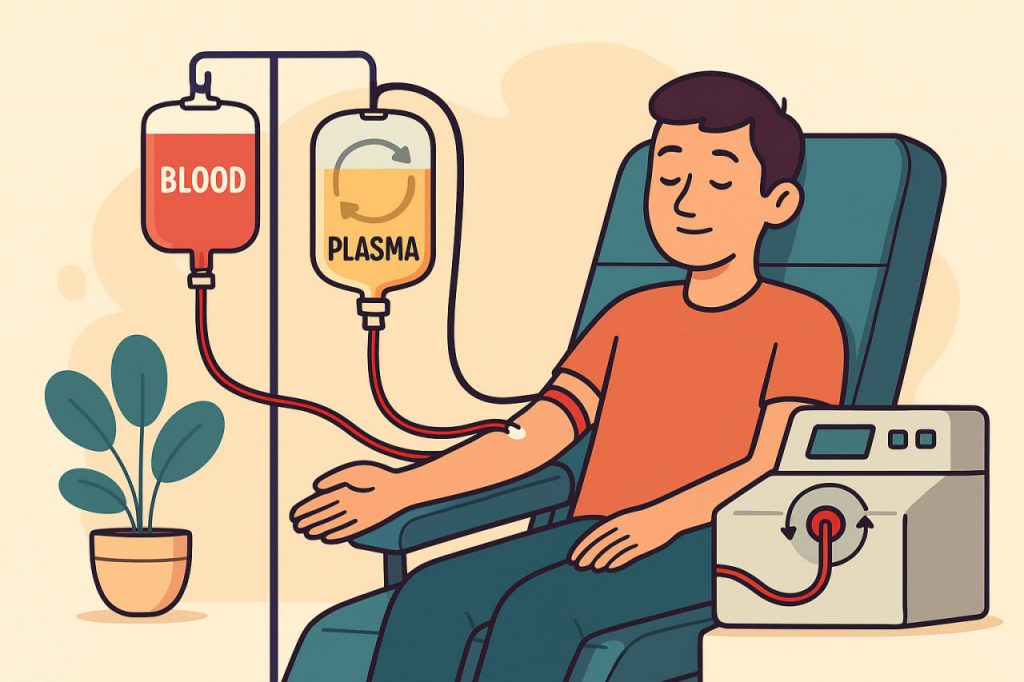Donating plasma is just as important as donating blood, as it helps treat patients with immune deficiencies, clotting disorders, and other serious conditions. However, plasma donation involves a different process and preparation compared to standard blood donation. Knowing how to prepare and understanding the differences ensures safety for the donor and quality for the patient.
What Is Plasma?
Plasma is the clear, yellowish liquid portion of blood that makes up about 55% of its total volume. It contains water, proteins (such as antibodies and clotting factors), electrolytes, and nutrients. Unlike whole blood, plasma can be separated and used to produce life-saving medicines, including treatments for hemophilia and immune system disorders.
How Plasma Donation Works
The procedure is called plasmapheresis. Blood is drawn from the donor, then a machine separates plasma from red blood cells and platelets. The remaining components are returned to the donor’s body along with saline solution to replace the lost fluid. Plasma donation takes longer than a whole blood donation, usually about 60–90 minutes.
Differences Between Plasma and Blood Donation
- Frequency: Plasma can be donated more often, usually every 2 weeks, while whole blood is typically donated every 8–12 weeks.
- Duration: Plasma donation takes longer due to the separation process.
- Purpose: Blood donations are often used for transfusions, while plasma is used to produce medicines and therapies.
- Recovery: Plasma donors usually recover faster since red blood cells are returned to the body.
How to Prepare for Plasma Donation
- Stay hydrated – drink plenty of water the day before and the day of donation.
- Eat balanced meals – focus on foods rich in protein and iron (like lean meat, beans, and eggs).
- Avoid fatty foods – high-fat meals can interfere with plasma quality.
- Rest well – get enough sleep before your appointment.
- Avoid alcohol and caffeine – they dehydrate the body, reducing donation quality.
- Bring identification and medical history – plasma centers require strict health checks.
Possible Side Effects
Plasma donation is generally safe, but some donors may experience dizziness, fatigue, or bruising at the needle site. Drinking fluids and eating after donation helps restore balance.
Conclusion
Plasma donation is a vital medical practice that saves lives by providing essential components for treating serious illnesses. While similar to blood donation, it involves a more complex process and requires careful preparation. Staying hydrated, eating healthy, and resting well ensure a safe and effective donation experience.
Glossary
- Plasma – the liquid part of blood carrying proteins, nutrients, and electrolytes.
- Plasmapheresis – the process of separating plasma from other blood components.
- Antibodies – proteins that help fight infections.
- Clotting factors – proteins that allow blood to clot properly.
- Transfusion – transferring blood or components into a patient’s bloodstream.


